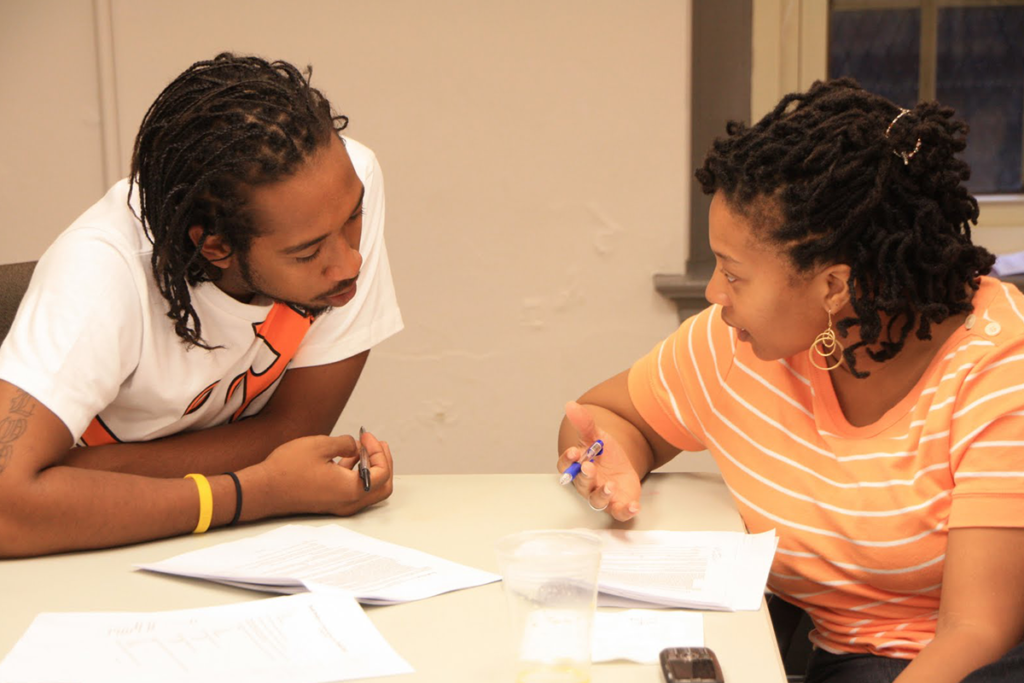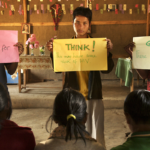What experiences do young Black adults in Durham, North Carolina, have with HIV testing? And what influence does stigma play on those experiences? To answer these questions, my co-authors and I recently published the results of a community-based participatory research (CBPR) study (LinCS 2 Durham: Linking Communities and Scientists), Relationship between Human Immunodeficiency Virus (HIV) knowledge, HIV-related stigma, and HIV testing among young Black adults in a southeastern city. Our cross-sectional survey examined barriers, facilitators and contributors to HIV testing. This blog post summarizes our findings and provides guidance on HIV prevention strategies.
Getting an HIV test is the first step to identifying people with HIV infection, and the pivotal entry point into the medical care system for both treatment and prevention. The Southeast United States is identified as the epicenter of the nation’s HIV epidemic, accounting for nearly 44% of all persons living with HIV.
Blacks account for almost half (44% in 2010) of all new HIV infections in the U.S. as well as more than one-third (40% in 2013) of all people living with HIV. The U.S. Centers for Disease Control and Prevention (CDC) estimate that approximately 1 in 20 Black men will be diagnosed with HIV during his lifetime, as will 1 in 48 Black women. In 2015, Durham County ranked 5th among the 100 North Carolina counties in the three-year (2013-2015) average rate of newly diagnosed HIV infections. During this time, Black males accounted for the highest rates of HIV in Durham, a county that is 38.3% Black.
Nearly one-third of ongoing transmission in the U.S. is attributed to persons unaware of their HIV infection. HIV stigma and knowledge have been cited as factors increasing HIV risk within Black communities. In our study, we sought to understand how HIV knowledge and HIV-related stigma impact HIV testing experiences among young Black adults.
Methodology
We developed survey measures in collaboration with our project’s Collaborative Council (CC) members, which consisted of a cross-representation of partners, including advocates and policymakers in allied fields, civil society and grassroots community stakeholders, potential research participants, researchers and sponsors, and program managers for HIV and allied service areas. The survey was completed by self-identifying young Black adults living in Durham, North Carolina, during the previous 6 months, ages 18-30, and reporting vaginal or anal sex in the past 6 months. A total of 508 of the 513-audio computer-assisted self-interview (ACASI) questionnaires completed were analyzed.
Findings
In our study, we found that ever testing for HIV was associated with high HIV knowledge and low HIV-related stigma. The majority of our participants reported ever testing for HIV and having an intention-to-test in the future. Overall, more women than men reported testing for HIV, as well as knowing someone who has tested positive for HIV, has AIDS, or has died from AIDS. The most commonly cited source of HIV/AIDS information was the media (e.g., radio, television, newspaper and internet), while the least frequently cited was church and other religious institutions. Intention-to-test for HIV in the future was high among those who cited media as a source of HIV/AIDS information.
Participants in our study had moderate to high HIV knowledge. However, misperceptions about HIV prevention and control were high among this population in responses to questions such as “If a pregnant woman has HIV, are there drugs she can take to protect her baby from being born with HIV?”, “Is there a vaccine available to protect people from getting infected with HIV?”, and “Are there drugs that can cure HIV and AIDS?”. More men than women had misperceptions. Since high HIV knowledge was positively associated with HIV testing, it is reasonable to assume that participants who possess more accurate knowledge about HIV transmission, prevention and control, feel more capable of reducing their risk for contracting HIV by seeking opportunities to know their status. People who are aware of their infection can also make behavioral changes and seek effective treatment to reduce transmission.
The majority of our participants had overall low HIV-related stigma, yet scored high on internalized HIV-related stigma (self-shaming/blaming attitudes), as seen in responses to scale items such as “If I tested positive for HIV, I do not think my life would change very much” and “If I found out that I was HIV positive, it would affect my social life, even if I never told anyone”. Almost half of those who had internalized HIV-related stigma reported never testing for HIV and had no intention to test for HIV in the future. A positive attitude towards people living with HIV/AIDS (PLWHA), but a negative attitude should they test positive for HIV could help explain these participants’ hesitation to test for HIV.
Discussion
Our study highlights the importance of understanding HIV knowledge, where such knowledge is obtained, and how HIV-related stigma influence HIV testing experience and intentions. Reducing HIV-related stigma and increasing HIV knowledge are not sufficient in promoting HIV testing (i.e., intention-to-test) among young Black adults in Durham, unless specific emphasis is placed on addressing internalized HIV-related stigma and misperceptions about HIV prevention and control.
Controlling and ultimately ending the HIV epidemic in Durham will also require incorporating age and gender specific educational strategies and developing measures to assess gender-based changes in internalized HIV-related stigma and knowledge. Sustaining a shared response through the support of HIV prevention efforts across all levels of society, including collaborating with community stakeholders, particularly Black churches could help improve the reach of HIV prevention messages and services.
If you want to continue the learn more about efforts to promote HIV testing in Durham, a good source of information is Durham Knows, a public health campaign launched by the Partnership for a Healthy Durham in collaboration with the Durham County Department of Public Health.
Photo caption: Members of the LinCS 2 Durham’s Collaborative Council
Photo credit: FHI 360




